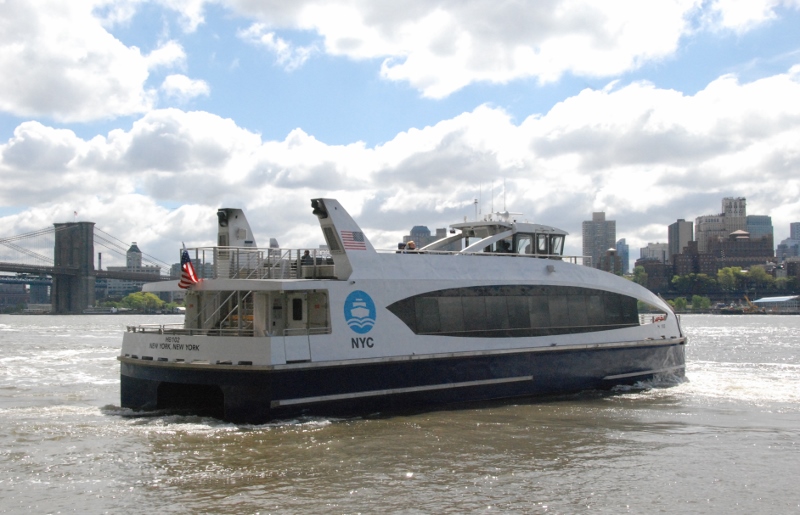The NYC Ferry started its South Brooklyn route June 1, as operators juggled scheduling to adapt to bigger than expected crowds since the public system launched May 1.
The first month of service attracted around 243,000 riders, some 93,000 more than expected even with an aggressive marketing campaign, according to city officials. Mayor Bill de Blasio, who has made the $335 million ferry investment a signature project of his administration, called the big ridership numbers “a good problem to have,” and said a bigger vessel design in the future could be considered.
But delays and long lines, especially at Manhattan’s Pier 11 terminal, were an annoyance to ferry passengers who had welcomed the new $2.75 service. Minor mechanical issues like engine controls had to be worked out by operators with NYC Ferry by Hornblower, and a May 7 oil spill from a Brooklyn electrical substation caused the Coast Guard to impose an East River safety zone that delayed ferries.
Memorial Day weekend brought more long lines, especially for passengers heading to and from Governors Island, the former Coast Guard base now a public park in the harbor. In social media posts for users NYC Ferry issued advisories and apologies for delays, while officials of the city Economic Development Corporation said schedule changes would be tweaked to reduce delays and wait times at terminals.
The start of the South Brooklyn route could take some pressure off too. The Thursday morning startup was festive at the Red Hook landing in Brooklyn, where the maritime community group PortSide New York hosted a free continental breakfast and champagne for commuters at the 172’x31.5’ Mary A. Whalen, a restored 79-year-old coastal tanker that is base for the group’s education programs.
The 86’x29’ Incat Crowther designed ferries, built by Horizon Shipbuilding Inc., Bayou La Batre, Ala., and Metal Shark, Franklin, La., carry up to 150 passengers. Five were delivered for the system’s start-up and will number 20 in all when those orders are fulfilled and six routes up and running in 2018.
The fleet will comprise 16 “river-class” boats, powered by pairs of Baudouin 6M26.3 engines each turning 815 hp at 2,100 rpm, and four deeper-draft variants for the longest Wall Street-Rockaway run, to handle bigger sea conditions in the lower harbor. The first of those Rockaway boats, with 20” additional freeboard and powered by the bigger V-12 12M26.3 engines with 1,400 hp at 2,100 rpm, arrived in late May.





